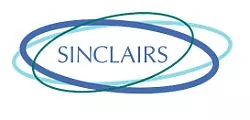In 2016, hundreds of directors, managers, principal points of contact (PPCs), compliance officers, administrators, and Money Laundering Reporting Officers (MLROs) serving Cayman Islands funds, banks, trust companies and other Reporting Financial Institutions (RFIs) will start to feel the full force of 'a great wind': global tax transparency. If you are involved in the management or administration of an RFI, this article will help you to better understand how to avoid getting a regulatory headache from global tax transparency.
GLOBAL TAX TRANSPARENCY REALLY GATHERS STEAM IN 2016
FATCA ramps up
All RFIs already have due diligence and reporting obligations under International Tax Compliance (ITC) Regulations regarding the Cayman Islands' Intergovernmental Agreements with the U.S. and the United Kingdom dealing with U.S. Foreign Account Tax Compliance Act (FATCA) and "UK FATCA", respectively. These obligations increase significantly in 2016 as remediation must be completed for all pre-existing accounts above the threshold exemptions. FATCA's 'transitional period' officially ends on 31 December 2015 as stated in Notice 2014-33 published by the U.S. Department of the Treasury and the IRS on 19 May 2014. On 18 September 2015 the U.S. Department of the Treasury and the IRS published Notice 2015-66 to soften certain aspects of this, such as the consequences for RFIs in Model 1 IGA jurisdictions that miss the 30 September 2015 deadline for exchange information with the IRS.
CRS – 'GATCA' - takes effect
Even more significantly, the Common Reporting Standard (CRS) (aka GATCA for 'Global FATCA') makes its grand entrance and, with that, global tax transparency really gathers steam. The CRS is the global standard for automatic exchange of financial account information developed by the Organisation for Economic Co-Operation and Development.
The Cayman Islands published a consultation draft of The Tax Information Authority (International Tax Compliance) (Common Reporting Standard) Regulations, 2015 (ITC (CRS) Regulations) on 14 September 2015. The ITC (CRS) Regulations provide that from 1 January 2016 "the Common Reporting Standard forms part of the laws of the Islands". They clarify that "the Common Reporting Standard commentary made and published by the Organisation for Economic Co-Operation and Development is an integral part of the Common Reporting Standard and accordingly applies for the purposes of the automatic exchange of financial account information under a relevant scheduled Agreement [under the TIA Law]. §5(1)." The CRS and integral commentary alone run 306 pages.
'GATCA gaps'
The OECD has identified over forty significant differences – 'GATCA gaps' – between the CRS and FATCA. Cayman Islands law requires that substantial updates are made to all RFIs international tax compliance arrangements and processes such as hedge funds' FATCA Compliance Programs or fund administrators' policies and procedures
For example, several categories of Non-Reporting Financial Institutions under FATCA are Reporting Financial Institutions under the CRS. In particular, all Sponsored Investment Entities (SIEs) sponsored by the 8,901 sponsoring entities registered as such on the IRS FATCA FFI Registration System must register as RFIs with their domestic tax authority if they are located in a CRS Participating Jurisdiction. This means that each and every Cayman SIE under FATCA must appoint a principal point of contact for all purposes of compliance with the ITC (CRS) Regulations who, by 30 April 2017, must notify the Department of International Tax Cooperation's (DITC) Automatic Exchange of Information (AEOI) Portal that the entity is a Reporting Financial Institution in advance of its first CRS reporting deadline on 31 May 2017.
The TIA's Guidance Notes
The Cayman Islands Tax Information Authority (TIA) is empowered to publish Guidance Notes on the CRS. The ITC (CRS) Regulations provide that any CRS Guidance Notes must be read subject to the CRS itself including the OECD's integrated commentary. There will inevitably be significant differences in the TIA's current Guidance Notes regarding FATCA and UK FATCA and any Guidance Notes regarding the CRS.
This is foreshadowed by the work already done by Her Majesty's Revenue & Customs (HMRC) in the UK. HMRC's 14 September 2015 draft Guidance Notes on the CRS includes tables showing the extent to which the existing FATCA and UK IGA Guidance has or has not been incorporated into the CRS Guidance. Several dozen sections included in the HMRC's CRS Guidance are not included in the HMRC's FATCA Guidance, and vice versa.
Significant learning curve
In order for each RFI to effectively implement all relevant arrangements and procedures necessary to comply with the three different, parallel ITC regimes the directors, principal point of contact, compliance personnel and MLRO must grapple with a significant learning curve. The topics which need to be fully understood include the ITC Regulations and the relevant international agreements, entity classification, account classification, classification of account holders and controlling persons as reportable or non-reportable, legal disclosures to investors/account holders, registration with the IRS, notification to the DITC, due diligence procedures including collection, review and remediation of self-certifications, withholding certificates and documentary evidence, reporting on reportable persons, reporting on suspicion of tax evasion, communication with the regulators and oversight of any delegates.
Your RFI must establish and maintain prescribed ITC "arrangements"
Identify Reportable Accounts
The ITC Regulations require each of your RFIs to establish and maintain arrangements designed to identify Reportable Accounts, namely any Financial Account maintained by your RFI and held by one or more Specified U.S. Persons, Specified UK Persons or Reportable Persons or by a Passive Non-Financial Foreign Entity with one or more Controlling Persons that is a Specified U.S. Person, a Specified UK Person or a Reportable Person under the CRS. The definition of a Passive Non-Financial Entity under the CRS is much broader than the Passive NFFE class under FATCA and UK FATCA and could yield surprising practical results for many Cayman investment entities with "onshore" investors.
FATCA requires RFIs to identify payments to NPFIs
The ITC Regulations regarding the U.S. IGA also require each RFI to establish and maintain arrangements that are designed to identify payments made by that RFI to a non-participating Financial Institution (NPFI) in the calendar year 2015 or 2016.
Safekeeping for six years
Your RFI must ensure that any information obtained in accordance with the ITC Regulations or a record of the steps taken to comply with the ITC Regulations in respect of a Financial Account is kept for six years from the end of the year to which the information relates or during which the steps were taken. Your RFI must always be prepared to produce all of this information to the Tax Information Authority promptly at any time.
Sinclairs detailed Guidance Note
Sinclairs has prepared a detailed Guidance Note on the steps each RFI can take to take to establish and maintain prescribed ITC arrangements to comply with the new ITC regulations. We provide a detailed explanation of the legal implications for Investment Entities and their Fiduciaries, Principal Points of Contact, Administrator / Compliance Team and Money Laundering Reporting Officer (MLRO), and the solutions we offer.
Please contact us for your free copy of the Guidance Note.
The content of this article is intended to provide a general guide to the subject matter. Specialist advice should be sought about your specific circumstances.


